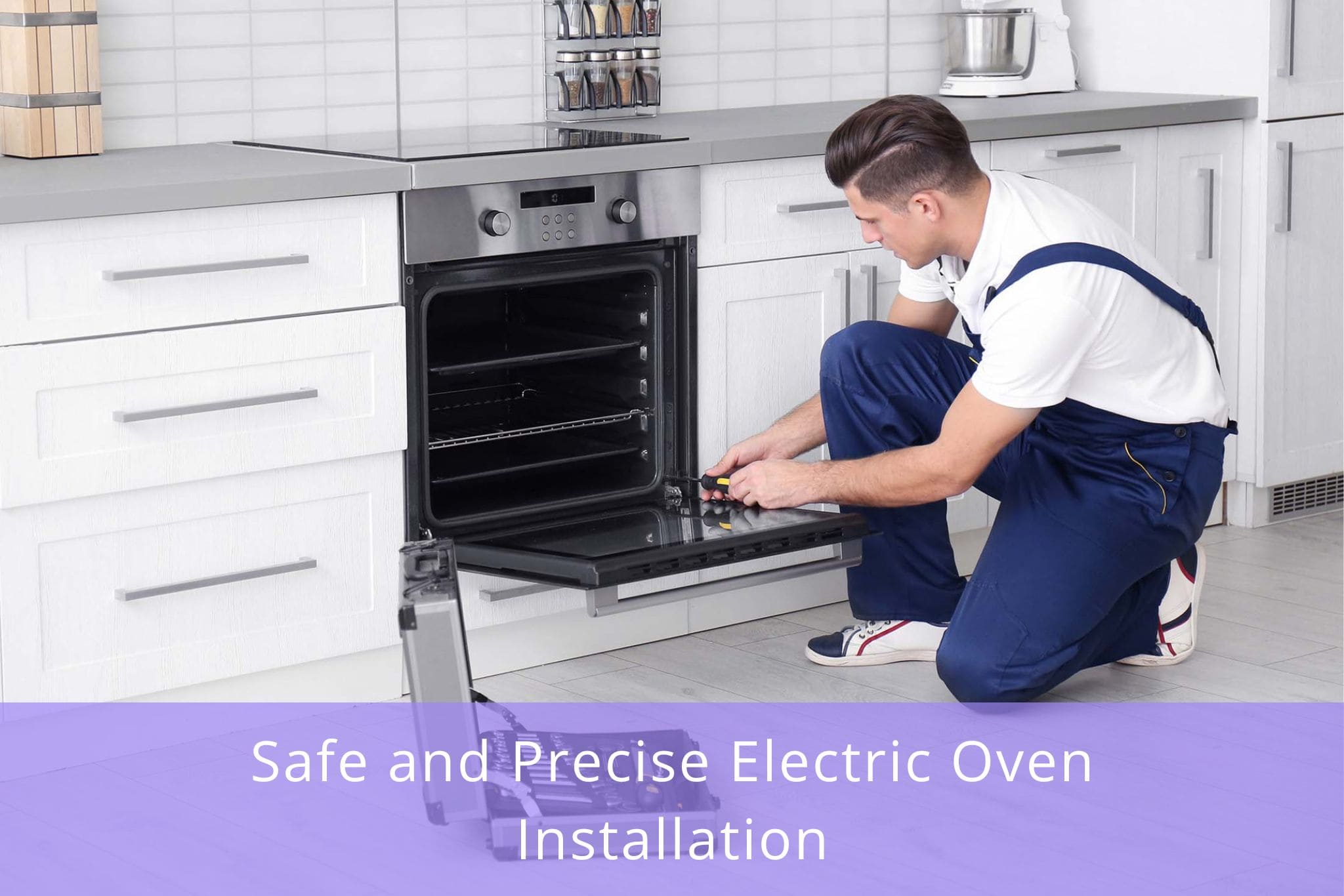
This is general technical information. Always follow the manufacturer’s installation instructions and applicable Canadian gas and electrical codes. Gas work—including regulator setup and LP conversion—must be performed by a licensed technician. Non-compliance may void the appliance warranty.
A built-in gas cooktop is compact, efficient, and sensitive to small mistakes. Good results come from four deliberate passes: prepare the space and utilities, set the countertop cut-out and clearances, connect gas and power correctly, then commission burners and ventilation. Follow your model’s installation instructions at every step; use the guidance below to avoid leaks, warped worktops, and poor flame quality.
Plan The Space, Utilities, And Ventilation
Start with access and safety. Map the route from the entry to the kitchen so the carton moves through doorways and corners without forcing it. Lay non-slip runners to protect flooring. Clear drawers and doors near the cut-out so hardware will not snag the trim while you work.
Confirm utilities. A manual shut-off valve must be inside the base cabinet, within reach of the front. The ignition system requires a grounded 120-volt receptacle located in an adjacent cabinet or a rear cavity that remains reachable after installation. Plan a path for the flexible gas connector that avoids sharp edges; use a grommet or edge guard where the hose passes through wood or metal.
Ventilation is essential. A hood at least as wide as the appliance with a capture depth of 300–350 mm (12–14 in) typically performs better than a shallow hood with higher airflow. Island locations are more demanding; expect reduced capture during vigorous boiling without a deep canopy. Keep duct runs short with smooth metal and sealed joints to an exterior termination with a backdraft damper.
Check fuel type on the rating label. Most units ship for natural gas and include an LP conversion kit with small orifices and regulator parts. Store the kit with the manual so a qualified technician can perform the conversion and set pressure correctly. Incorrect orifices or regulator settings cause unstable flame, soot, and odour.
Clearance And Ventilation Targets
| Requirement | Typical Range | Why It Matters |
|---|---|---|
| Side setback from cut-out edge | ≥ 50 mm (2 in) | Reduces heat transfer into benchtop material. |
| Rear setback from wall splashback | 50–75 mm (2–3 in) unless manual differs | Provides room for hose sweep and heat wash. |
| Hood width vs cooktop | Hood ≥ appliance width | Improves capture of steam and fumes. |
| Hood capture depth | 300–350 mm (12–14 in) | Helps contain plumes during searing and boiling. |
| Minimum overhead clearance | As per manual (often ≥ 760 mm / 30 in to hood) | Protects cabinets and finishes from heat. |
Tools & Materials Checklist for a Safe Cooktop Install
- Tape measure, square, spirit level, pencil, jigsaw with a fine blade, clamps and offcut supports
- Adjustable spanners, approved pipe thread sealant for tapered threads, new flexible gas connector sized for input and route, grommet or edge guard
- Leak-detection solution, manufacturer’s clamp brackets and screws, heat-resistant edge treatment if the worktop material requires it
Set The Cut-Out And Countertop Clearances
Measure above and below. Countertops are rarely perfectly square; even a few millimetres of taper can pinch the chassis or twist the frame. Compare your numbers to the cut-out diagram in the installation instructions for the exact model. Allow for trim overlap and any specified air gap between the cut-out edge and the chassis. If you are replacing a different brand, confirm that the old opening does not exceed new maximums; oversize cut-outs may need a filler frame approved for the material.
Mind materials and support. Solid surface, laminate, wood, and stone have different rules for edge distances and reinforcement near heat sources. Where the manual calls for heat shields or foil tape along the cut-out edge, install them now. Avoid unsupported spans at the front and back of the opening; add cross-rails if needed so the worktop remains rigid under pot weight and clamp force.
Dry-fit before you connect anything. Lower the cooktop into the cut-out to confirm trim coverage, corner clearance, and cable routing. Lift it back out to install clamp brackets and drill pilot holes for the specified screws. Do not substitute longer screws; over-penetration can contact wiring or distort the chassis.
Cut-Out Measurement Guide
| Checkpoint | Measure | Acceptance Criteria | Notes |
|---|---|---|---|
| Opening width | Left and right at front and back | Within model tolerance; parallel within 2–3 mm (1⁄16–1⁄8 in) | Prevents bind and paint scuffing. |
| Opening depth (front to back) | At centreline and edges | Within tolerance; no over-size | Maintains trim seating and seal. |
| Corner radius | Per template | Match template radius | Avoids stress cracks in solid surface. |
| Countertop flatness | Across opening | ≤ 2 mm variance | Supports even gasket compression. |
| Edge protection | Heat treatment where specified | Installed, continuous | Reduces heat soak and warping. |
Level, Support, And Seal
Set the cooktop into the opening with the supplied gasket or seal. Use a spirit level across the grates left-to-right and front-to-back. If the surface is not flat, add non-compressible shims or adjust support rails until level. Tighten clamp brackets evenly, alternating sides so the frame seats without distortion. Do not over-tighten; crushing the gasket increases heat transfer into the benchtop and can lead to long-term warping.
Connect Gas, Power, And Ignition
Connections must be correct, clean, and accessible. Confirm that the appliance regulator is present at the inlet, oriented with the flow arrow in the correct direction, and reachable for future pressure checks. The regulator stabilises burner output when other gas loads start and stop; never remove or bypass it.
Use approved thread sealant on tapered pipe threads only. Do not apply sealant to flare or compression seats. Connect the flexible gas connector to the shut-off valve and then to the regulator or inlet on the cooktop. Route the connector in a smooth sweep with no tight bends; typical minimum bend radius equals at least 5–6 times the hose diameter. Protect it from cabinet edges with a grommet or edge guard. Keep the connector and valve clear of drawers and sliding shelves.
Plug the ignition cord into a grounded receptacle in an adjacent cabinet or a rear cavity that remains accessible. Avoid extension cords. If the cooktop shares a branch circuit with other loads, confirm that the breaker and conductor gauge match the nameplate; marginal circuits cause nuisance clicking and intermittent re-ignition when elements elsewhere start.
Connection Do’s And Don’ts
| Connection | Do | Do Not | Reason |
|---|---|---|---|
| Regulator | Install with correct flow; keep test port reachable | Bypass or bury permanently | Ensures stable pressure and future verification. |
| Threads | Use sealant on tapered pipe threads only | Use sealant on flare/compression seats | Protects sealing surfaces from contamination. |
| Flexible connector | Use new, correctly sized connector | Kink, twist, or over-bend | Maintains full flow and connector life. |
| Electrical | Use grounded receptacle within reach | Use an extension cord | Provides reliable ignition and control power. |
Verify Supply And Test For Leaks
Open the shut-off valve slowly. Apply leak-detection solution to every joint you touched—valve, connector ends, regulator inlet and outlet. Watch for bubbles for at least 60 seconds at each joint. Any reaction means closing the valve, remaking the joint, and retesting until dry. Do not use a flame. Position the connector where you can reach it again without dismantling cabinetry. If your home uses propane, confirm that the correct orifices are installed and the regulator is set to LP before you proceed.
Commission Burners, Ventilation, And Safety
With gas and power ready, set each knob to ignite and observe the flame. Expect a short clicking, then a smooth ignition. A healthy flame shows sharp blue cones with minimal yellow at the tips. Typical cone height at a steady simmer is about 3–6 mm (⅛–¼ in); at high it increases but should remain attached to the ports without lifting. If the flame lifts, pulses, or blows off when a nearby exhaust starts, stop and have a qualified technician check pressure and air mix.
Run each burner on both extremes. Let it simmer for a minute, then switch quickly to high and back to low. The flame should not go out during a fast transition. Where the manual allows a user adjustment, set low-flame screws for a stable, non-flickering simmer on each burner. Record any changes for future reference.
Match cookware to burner size. Oversized pans waste heat up the sides and overheat handles; undersized pans can concentrate heat on a small area and cause scorching. Confirm continuous cast-iron grates sit flush and do not rock. Clean burner caps and ports after installation to remove packing dust; even a small speck can skew the pattern and cause uneven heating.
Test ventilation with real cooking conditions. At the lowest comfortable hood speed, steam from a pot should move into the baffles rather than rolling forward. Increase speed only as needed. If capture remains weak, reduce pan temperature or use a lid during heavy boils until ducting or hood depth is improved. Keep filters clean; blocked baffles reduce capture and increase odour.
Performance Checks And Targets
| Check | Target | How To Verify | If Out Of Spec |
|---|---|---|---|
| Ignition time | Within a few seconds per burner | Listen for click then flame | Inspect spark gap and cap seating; verify power. |
| Flame quality | Blue cones, minimal yellow, no lift | Visual at low and high | Check cap position; verify regulator setting and fuel type. |
| Simmer stability | Steady at 3–6 mm cone height | Observe for 60–90 s | Adjust low-flame screw per manual. |
| Vent capture | Steam drawn into baffles at low speed | Visual with real steam | Increase hood depth or speed; shorten duct run. |
| Leak status | No bubbles at any joint after 60 s | Leak solution test | Remake joint; retest before use. |
Final Commissioning Checklist
- Cut-out matches template; trim sits flat; gasket compressed evenly with the cooktop level in both axes.
- Regulator installed in the correct flow direction; every touched joint tested for at least 60 seconds with no bubbles.
- Each burner ignites cleanly; stable blue flame at high and low without lifting or excessive yellow tipping; grates are flush and pans sit steady; hood captures steam at a practical low speed.
Care And Records Basics
- Label the shut-off valve location inside the cabinet. Photograph the rating label, model and serial number, regulator orientation, and connector path. Note installation date and any orifice changes.
- Wipe the surface and trim with a soft cloth and mild detergent after installation. Avoid abrasive pads on stainless or enamel. Do not line drip areas with foil that can block cooling slots or alter flame behaviour.
- Keep filters and ducting clean. Review performance quarterly: confirm fast ignition, stable simmer, and effective capture at a low hood setting.
Install methodically and verify each stage. When the cut-out is measured correctly, clearances are respected, joints are leak-free, burners are tuned, and ventilation captures real plumes, the cooktop runs safely, heats evenly, and remains serviceable for years.



